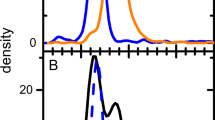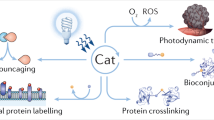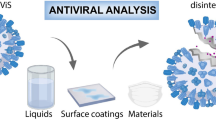Abstract
Recombinant adenovirus vectors are popular tools for gene transfer and gene therapy. However biosafety constraints require that all handling of the vectors and vector-containing samples is restricted to dedicated containment laboratories, unless they had undergone a validated virus-inactivation procedure, which decontaminates the samples from any active virus. In this study we evaluated the feasibility of photodynamic treatment (PDT) with visible light to inactivate recombinant adenovirus vectors in biological samples, with minimum associated effects on other biological activities. Several photosensitizers were tested for their capacity to inactivate a model human adenovirus vector, AdCMVLuc, upon illumination. Four photosensitizers (methylene blue (MB), rose bengal (RB), uroporphyrin (UP) and aluminum phthalocynine tetrasulphonate (AlPcS4)) could inactivate the adenovirus, as measured by expression of the luciferase reporter gene and by plaque assay. Of these, MB demonstrated to be the most effective sensitizer in phosphate-buffered saline (PBS), giving >7 log10 inactivation of the adenovirus. DNA isolated from MB- and light-treated virions was inefficient as a template for transcription. Furthermore, Southern blot analysis revealed fragmentation of the viral DNA. Based on its preference for DNA, MB is suited for adenovirus inactivation in blood plasma. Spiking experiments in which AdCMVLuc was added to plasma samples demonstrated a reduction (>4 log10-fold) of reporter gene expression to almost background levels. In contrast to MB, photodynamic treatment with RB, UP or AlPcS4 did not lead to DNA damage. Although alterations of the viral capsid could not be detected, the binding pattern of the particles to target cells was significantly changed. Taken together, our data demonstrate that PDT is an efficient, convenient and useful method for the inactivation of adenovirus vectors in biological samples.
This is a preview of subscription content, access via your institution
Access options
Subscribe to this journal
Receive 12 print issues and online access
$259.00 per year
only $21.58 per issue
Buy this article
- Purchase on Springer Link
- Instant access to full article PDF
Prices may be subject to local taxes which are calculated during checkout







Similar content being viewed by others
References
Takafuji ET, Gaydos JC, Allen RG, Top FH Jr . Simultaneous administration of live, enteric-coated adenovirus types 4, 7 and 21 vaccines: safety and immunogenicity J Infect Dis 1979 140: 48–53
Boulikas T . Status of gene therapy in 1997: molecular mechanisms, disease targets, and clinical applications Gene Ther Mol Biol 1998 1: 1–172
Imler JL . Adenovirus vectors as recombinant viral vaccines Vaccine 1995 13: 1143–1151
Ben-Hur E et al. Photodynamic inactivation of retroviruses by phthalocyanines: the effects of sulphonation, metal ligand and fluoride J Photochem Photobiol B 1992 13: 145–152
Lambrecht B, Mohr H, Knuver Hopf J, Schmitt H . Photoinactivation of viruses in human fresh plasma by phenothiazine dyes in combination with visible light Vox Sang 1991 60: 207–213
Horowitz B et al. Inactivation of viruses in blood with aluminum phthalocynine derivatives Transfusion 1991 31: 102–108
Horowitz B et al. Inactivation of viruses in red cell and platelet concentrates with aluminum phtalocyanine (AlPc) sulfonates Blood Cells 1992 18: 141–150
Ben-Hur E et al. The photodecontamination of cellular blood components: mechanisms and use of photosensitization in transfusion medicine Transfus Med Rev 1996 X: 15–22
Stevenson SC et al. Human adenovirus serotypes 3 and 5 bind to diferent cellular receptors via the fiber head domain J Virol 1997 69: 2850–2857
Wagner SJ et al. Mammalian genotoxicity assessment of methylene blue in plasma: implications for virus inactivation Transfusion 1995 35: 407–413
Dewilde A et al. Virucidal activity of pure singlet oxygen generated by thermolysis of a water-soluble naphtalene endoperoxide J Photochem Photobiol B 1996 36: 23–29
Smetana Z et al. Photodynamic inactivation of herpes viruses with phthalocyanine derivatives J Photochem Photobiol B 1994 22: 37–43
Matthews JL et al. Photodynamic therapy of viral contaminants with potential for blood banking applications Transfusion 1988 28: 81–83
Sieber F et al. Antiviral activity of merocyanine 540 Photochem Photobiol 1987 46: 707–711
O’Brien JM et al. Evaluation of merocyanine 540-sensitized photoirradiation as a means to inactivate enveloped viruses in blood products J Lab Clin Med 1990 116: 439–447
Malik Z et al. Alteration in herpes simplex virus proteins following photodynamic teatment with phtalocyanines Photochem Photobiol 1996 63 (Suppl.): 59S–60S (Abstr. TAM-A6)
Lenard J, Vanderoef R . Photoinactivation of influenza virus fusion and infectivity by rose bengal Photochem Photobiol 1993 58: 527–531
Lenard J, Rabson A, Vanderoef R . Photodynamic inactivation of infectivity of human immunodeficiency virus and other enveloped viruses using hypericin and rose bengal: inhibition of fusion and syncytia formation Proc Natl Acad Sci USA 1993 90: 156–162
Vincent S, Muller-Eberhard U . Effects of porphyrins on proteins of cytosol and plasma. In vitro photo-oxidation and crosslinking of proteins by naturally occurring and synthetic porphyrins J Lab Clin Med 1987 110: 475–482
Vincent S, Holeman B, Cully BC, Muller-Eberhard U . Porphyrin-induced photodynamic cross-linking of hepatic heme-binding proteins Life Sci 1986 38: 365–372
Sandberg S, Romslo I . Porphyrin-sensitized photodynamic damage of isolated rat liver mitochondria Biochim Biophys Acta 1980 593: 187–195
Abe H, Wagner SJ . Analysis of viral DNA, protein and envelope damage after methylene blue, phthalocyanine derivative or merocyanine 540 photosensitization Photochem Photobiol 1995 61: 402–409
Schnipper LE, Lewin AA, Swartz M, Crumpacker CS . Mechanisms of photodynamic inactivation of herpes simplex viruses: comparison between methylene blue, light plus electricity, and hematoporphyrin plus light J Clin Invest 1980 65: 432–438
Schneider JE Jr et al. Methylene blue and rose bengal photoinactivation of RNA bacteriophages: comparative studies of 8-oxoguanine formation in isolated RNA Arch Biochem Biophys 1993 301: 91–97
Floyd RA, West MS, Eneff KL, Schneider JE . Methylene blue plus light mediates 8-hydroxyguanine formation in DNA Arch Biochem Biophys 1989 273: 106–111
Wang J, Hogan M, Austin RH . DNA motions in the nucleosome core particle Proc Natl Acad Sci USA 1982 79: 5896–5900
Noe DA . A mathematical model of coagulation factor VIII kinetics Haemostasis 1996 26: 289–303
Cotten M et al. High-efficiency receptor-mediated delivery of small and large (48 kilobase) gene constructs using the endosome-disruption activity of defective or chemically inactivated adenovirus particles Proc Natl Acad Sci USA 1992 89: 6094–6098
Cotten M et al. Psoralen treatment of adenovirus particles eliminates virus replication and transcription while maintaining the endosomolytic activity of the virus capsid Virology 1994 205: 254–261
Wagner SJ et al. Determination of residual 4′-aminomethyl-4,5′,8-trimethylpsoralen and mutagenicity testing following psoralen plus UVA treatment of platelet suspensions Photochem Photobiol 1993 57: 819–824
Fallaux FJ et al. Characterization of 911: a new helper cell line for the titration and propagation of early region 1-deleted adenoviral vectors Hum Gene Ther 1996 7: 215–222
Herz J, Gerard RD . Adenovirus-mediated transfer of low density lipoprotein receptor gene acutely accelerates cholesterol clearance in normal mice Proc Natl Acad Sci USA 1993 90: 2812–2816
Stratford-Perricaudet LD, Perricaudet M . Gene transfer into animals – the promise of adenovirus. In: Cohen-Haguenauer O, Boiron M (eds) . Human Gene Transfer Inserm/John Libbey Euro-text: Paris 1991 51–61
Wohlfart CEG, Svensson UK, Everitt E . Interaction between HeLa cells and adenovirus type 2 virions neutralized by different antisera J Virol 1985 56: 896–903
Blixt Y, Varga MJ, Everitt E . Enhancement of intracellular uncoating of adenovirus in HeLa cells in the presence of benzyl alcohol as a membrane fluidizer Arch Virol 1993 129: 265–277
Greber UF, Willetts M, Webster P, Helenius A . Stepwise dismantling of adenovirus 2 during entry into cells Cell 1993 75: 477–486
Author information
Authors and Affiliations
Rights and permissions
About this article
Cite this article
Schagen, F., Moor, A., Cheong, S. et al. Photodynamic treatment of adenoviral vectors with visible light: an easy and convenient method for viral inactivation. Gene Ther 6, 873–881 (1999). https://doi.org/10.1038/sj.gt.3300897
Received:
Accepted:
Published:
Issue Date:
DOI: https://doi.org/10.1038/sj.gt.3300897
Keywords
This article is cited by
-
Single-step concentration and purification of adenoviruses by coxsackievirus-adenovirus receptor-binding capture and elastin-like polypeptide-mediated precipitation
Archives of Virology (2016)
-
Bioluminescence and its application in the monitoring of antimicrobial photodynamic therapy
Applied Microbiology and Biotechnology (2011)
-
Ammonium sulphate precipitation of recombinant adenovirus from culture medium: an easy method to increase the total virus yield
Gene Therapy (2000)



